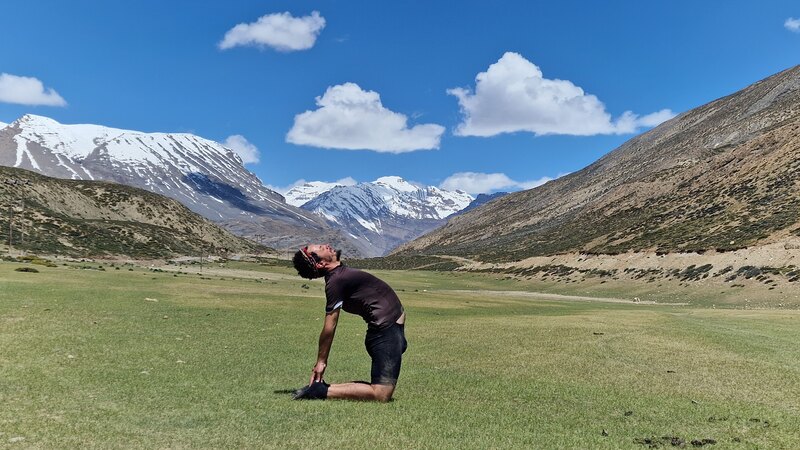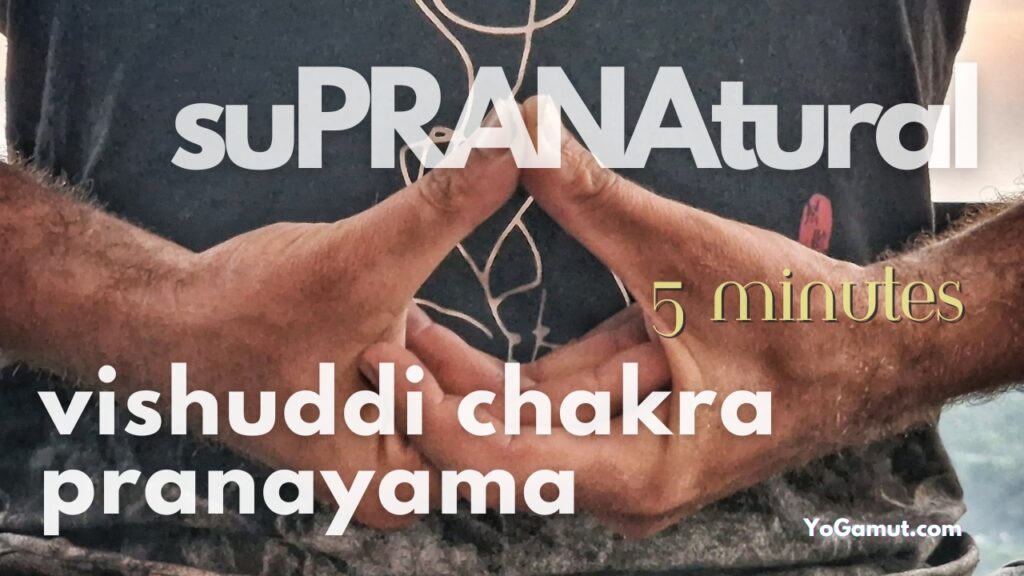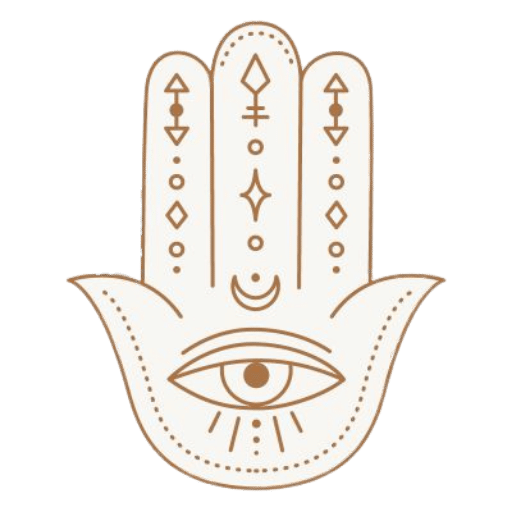Step into the realm of Himalayan tantric tradition with this empowering 5-minute Throat Chakra Pranayama practice for healing and opening Vishuddhi
Step into the sacred realm of Himalayan tantric tradition with this empowering 5-minute Throat Chakra Pranayama practice for Vishuddhi.
Immerse yourself in the transformative energy of this ancient technique, designed to harmonize and invigorate the throat chakra.
The essence of this Throat Chakra Pranayama lies in its ability to unlock the potential within the throat chakra, enhancing clear communication and fostering a profound sense of connection between our lower and higher centers.
In this short yet potent practice, you’ll experience the power of intentional breathwork, guiding the life force energy to the Vishuddhi, the throat center.
The fluid and deliberate movements, synchronized with your breath, create a harmonious dance that awakens and balances the energies within.
As you flow through the cycles of Vishuddhi Pranayama, allow yourself to be present in each moment.
The gentle rotations of your head, the intentional breaths, and the mindful movements are all part of a holistic experience aimed at aligning your energy centers. Following the practice, sit in stillness for a moment.
Eyes closed, feel the residual warmth and vibrancy in your throat area. Express gratitude for this gift of self-care and introspection.
Transition into slow, deep breathing, inhaling serenely, and exhaling with purpose. Let the calming rhythm of your breath guide you into a state of tranquil meditation.
Soften your breath, relax your body, and let your mind settle into the serene aftermath of Vishuddhi Pranayama.
This sequence serves as a powerful tool for balancing and energizing the throat chakra, allowing you to tap into your authentic voice and embrace the clarity that comes with it. Share this transformative practice with others, and together, let’s continue to explore the profound depths of yogic wisdom.
check also
> Udana Vayu Mudra: Releasing the Throat Chakra with Yoga and Mudra
> Kundalini Kriya for Vishuddi Chakra – A Traditional Yoga Practice for the Throat Chakra
Vishuddhi Breathing – Thraot Chakra Pranayama Instructions:
- Find a comfortable seated position, ensuring your spine is straight and shoulders relaxed. Close your eyes gently, bringing your attention to the present moment.
- Inhale slowly and deliberately, directing the breath to the throat area. Feel the expansion in the region of Vishuddhi, the throat chakra. Let the inhalation be steady and calming.
- As you reach the peak of your inhalation, hold the breath in. During this retention, rotate your head to the right in a circular motion three times. Then, repeat the same rotation to the left for three rounds.
- While still holding the breath, choose a movement that suits your current state: If you’re feeling stressed, gently move your head down. If you’re feeling positive and energized, lift your head upwards. Follow this with a gentle up-and-down movement of the head three times.
- Take one more sip of breath, and exhale forcefully through your nose. Feel the release of any residual tension as you let go of the breath.
- Repeat this entire sequence for a total of 10 rounds. Sync the movements with your breath, creating a flowing and meditative rhythm.
Concluding the Vishuddhi Pranayama:
- After completing the rounds, sit in stillness for a moment. Keep your eyes closed and allow your breath to return to its natural rhythm.
- Bring your hands to your throat area, feeling the warmth and energy you’ve cultivated in Vishuddhi. Take a moment of gratitude for this practice.
- Now, transition into slow, deep breathing. Inhale serenely, emphasizing the expansion in your throat and chest. Exhale slowly, letting go of any remaining stress or tension.
- As you continue to breathe deeply, enter a state of calm meditation. Soften your breath, relax your body, and let your mind settle. Enjoy the peaceful energy you’ve nurtured through Vishuddhi Pranayama.
This Vishuddhi Pranayama sequence serves as a powerful practice to balance and energize the throat chakra, promoting clear communication and a sense of inner calm.

10 CONTRAINDICATIONS TO THE THROAT CHAKRA PRANAYAMA
While breath retention practices, known as “kumbhaka” in yoga, can have various benefits, it’s essential to be aware of contraindications and exercise caution, especially for certain individuals or health conditions.
Here are some contraindications for breath retention:
1. **Cardiovascular Conditions:** Individuals with heart conditions, such as high blood pressure, heart disease, or a history of stroke, should avoid breath retention practices or consult with a healthcare professional before attempting them.
2. **Respiratory Issues:** People with respiratory conditions like asthma, chronic obstructive pulmonary disease (COPD), or any other respiratory disorders should approach breath retention practices with caution. Breath retention may exacerbate breathing difficulties.
3. **Pregnancy:** Pregnant women should avoid extended breath retention, particularly during advanced stages of pregnancy. It’s crucial to prioritize the safety and well-being of both the mother and the baby.
4. **Epilepsy:** Breath retention practices could potentially trigger seizures in individuals with epilepsy. People with a history of epilepsy or seizures should avoid breath retention unless supervised by a qualified instructor or healthcare professional.
5. **Anxiety Disorders:** Breath retention can induce anxiety in some individuals. Those with anxiety disorders or a history of panic attacks should approach these practices with mindfulness and possibly under the guidance of a qualified instructor.
6. **Hyperventilation Tendencies:** Individuals prone to hyperventilation should be cautious with breath retention, as it may lead to an imbalance in oxygen and carbon dioxide levels, potentially exacerbating symptoms.
7. **Neurological Conditions:** People with certain neurological conditions, such as migraines or other neurological sensitivities, may find that breath retention practices trigger or worsen their symptoms.
8. **Recent Surgery:** Individuals who have recently undergone surgery, particularly involving the chest or abdomen, should avoid breath retention until they receive clearance from their healthcare provider.
9. **Uncontrolled Hypertension:** Individuals with uncontrolled high blood pressure should be cautious with breath retention, as it can temporarily raise blood pressure levels.
10. **Inexperienced Practitioners:** Beginners to breathwork practices, especially those involving breath retention, should start with shorter durations and gradually progress. It’s essential to build tolerance and awareness over time.
Before incorporating breath retention practices into your routine, especially if you have any underlying health concerns, it’s crucial to consult with a healthcare professional or a qualified yoga instructor to ensure that these practices align with your individual health and wellness needs.



